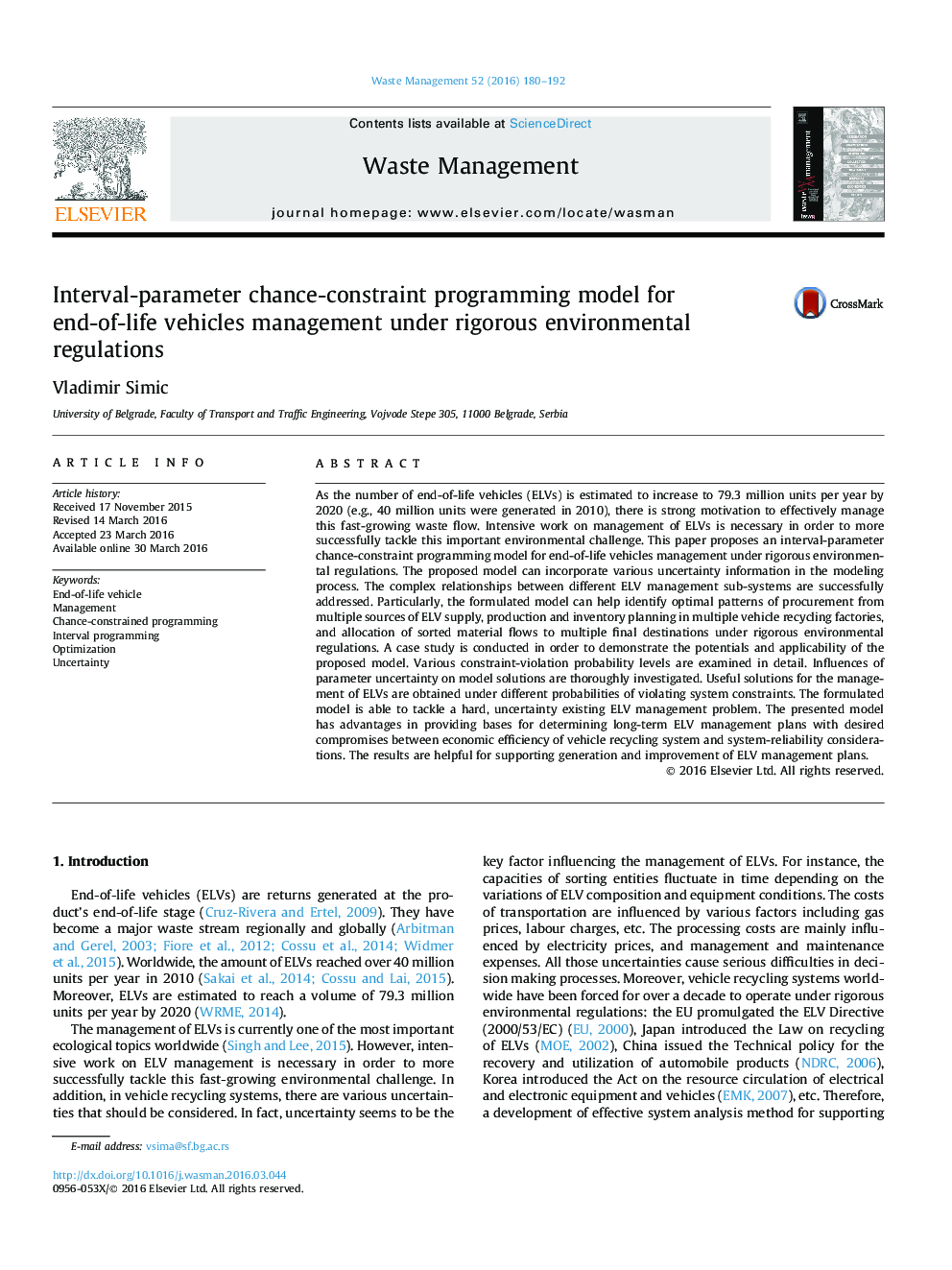| Article ID | Journal | Published Year | Pages | File Type |
|---|---|---|---|---|
| 4471240 | Waste Management | 2016 | 13 Pages |
•An interval-parameter chance-constraint programming model for management of ELVs is developed.•The model can handle uncertainties expressed as intervals and probability distributions.•The model can examine various constraint-violation probability levels.•Trade-off between ELV management system profit and failure risk can be addressed.•The model has advantages in providing long-term ELV management plans.
As the number of end-of-life vehicles (ELVs) is estimated to increase to 79.3 million units per year by 2020 (e.g., 40 million units were generated in 2010), there is strong motivation to effectively manage this fast-growing waste flow. Intensive work on management of ELVs is necessary in order to more successfully tackle this important environmental challenge. This paper proposes an interval-parameter chance-constraint programming model for end-of-life vehicles management under rigorous environmental regulations. The proposed model can incorporate various uncertainty information in the modeling process. The complex relationships between different ELV management sub-systems are successfully addressed. Particularly, the formulated model can help identify optimal patterns of procurement from multiple sources of ELV supply, production and inventory planning in multiple vehicle recycling factories, and allocation of sorted material flows to multiple final destinations under rigorous environmental regulations. A case study is conducted in order to demonstrate the potentials and applicability of the proposed model. Various constraint-violation probability levels are examined in detail. Influences of parameter uncertainty on model solutions are thoroughly investigated. Useful solutions for the management of ELVs are obtained under different probabilities of violating system constraints. The formulated model is able to tackle a hard, uncertainty existing ELV management problem. The presented model has advantages in providing bases for determining long-term ELV management plans with desired compromises between economic efficiency of vehicle recycling system and system-reliability considerations. The results are helpful for supporting generation and improvement of ELV management plans.
